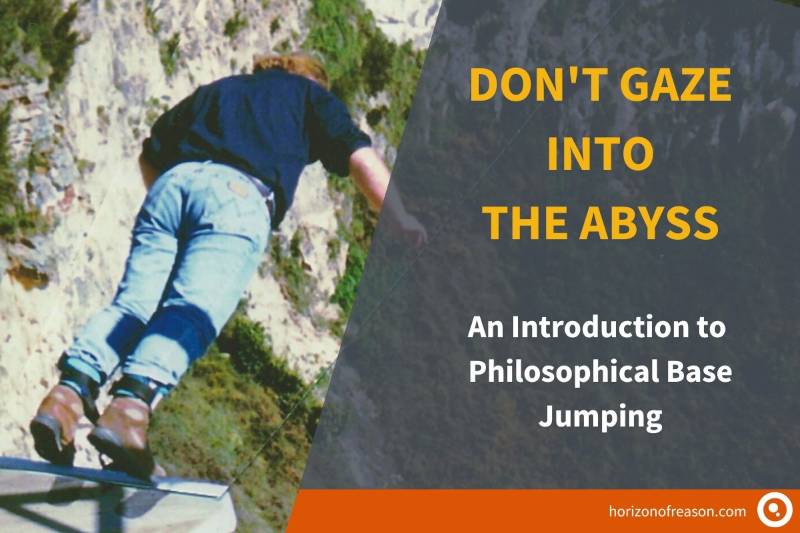
Problems of Atomic Motion in Epicurean Philosophy

Peter Prevos |
1396 words | 7 minutes
Share this content
Ancient Greek atomic philosophy has a remarkable modern feel. Democritus proposed the theory of atomic motion, which was later continued by the Epicurean philosophers. These Greek philosophers proposed the existence of atoms from a purely a priori perspective, as the technology to demonstrate the existence of atoms was unavailable to them. This short essay discusses some aspects of the Epicurean ideas about atomic motion.
Democritus’ argument for atomic motion
Democritus argues, according to Aristotle, for the existence of atoms to counter the consequences of infinite divisibility of objects, proposed by Zeno’s paradoxes. Democritus states that if there are no indivisible atoms, then the division of a body is possible anywhere. If a division is possible anywhere, then the division of a body is also possible everywhere. The supposition that division is possible everywhere does, however, yield absurd consequences related to infinity.
In contemporary mathematics, the remainder of an infinitely divided area is ‘Cantor Dust’, named after the German mathematician Georg Cantor who contemplated infinity. Cantor’s work on infinity eventually drove him to develop mystical theories, trying to prove the existence of God.

Back to the ancient Greeks, Zeno argued that “it is necessary that [things] are both small and large; so small as not to have magnitude, so large as to be unlimited” because infinite division leaves us with an endless number of parts.
Democritus’ arguments are not put forward as a solution to Zeno’s paradoxes of motion but are more likely a reply to Aristotle’s objection to the arguments of the pre-Socratic atomists. Democritus uses arguments about generation and destruction to argue for the existence of atoms. The existence of atoms is, according to Democritus, required so that bodies are not annihilated into Cantor Dust, which would contravene the second principle of conservation (nothing perishes into nothing).
Minimal Parts
Aristotle writes in book VI of Physics that atoms cannot touch each other if they are without size. If they would touch each other “whole to whole”, the parts would eclipse each other. Sizeless atoms are also unable to touch ‘part to part’ or ‘part to the whole’ because they have no parts.
Epicurus proposes that atoms have minimal parts to overcome the objection raised by Aristotle. If atoms have minimal parts, then they can touch each other “part to part” or “part to whole”. Minimal parts are not physically separable units out of which atoms are built, but the minimal units of distance for the physically indivisible atoms.
Epicurus also seems to put the concept of minimal distances forward as a reply to Zeno’s paradoxes. If there are no minimal distances—as Zeno implies—then motion would involve travelling over an infinite number of locations (Dichotomy paradox).
If a thing had an infinite number of parts because there is no minimum distance, it would be infinitely large (composition paradox).
Epicurus’ proposition for inseparable, but not partless atoms, lifts the objections raised by Zeno because he separates the notion of physical indivisibility and conceptual partlessness.
Minimal parts themselves are partless, which raises the question whether the theory of minimal parts only moves Aristotle’s problem about contact and succession to another level. Epicurus offers the analogy of perceptible minima as a solution. Epicurus proposes an object that is so far away that it can just be seen.
When the object if moved further even the slightest, it would not be visible any more. The minimum size the object appears to the observer is considered to be partless. The observer would not be able to see only part of the object as it would disappear from the field of view.
Epicurus argues that sensible minima must be next to one another just as our visual field can be conceived to be composed of perceptible minima. Epicurus argues that sensible minima and minimal parts of atoms are analogous and that the analogy explains how minimal parts can touch each other.
Having moved without moving?
Aristotle asked how something which has no parts, can be in motion across a border. A singular point can not be crossing a border by having the front half on one side of the border, while the back half is still on the other side, because the point is partless and has neither front nor back. An indivisible object can, according to Aristotle, therefore only “have moved” a distance, it can not be moving.
Diodorus Cronus’ reply to this argument is that it is logically respectable to state that “it has moved” while denying that “it is moving” was ever true. He uses the marriages of Helen of Troy to illustrate the principle: The past tense statement “Helen had three husbands” is correct while the present tense version “Helen has three husbands” was never right.
Diodorus’ counter-example would, however, not be acceptable to Aristotle. The counter-argument only shows that it is grammatically logical that we can deny the present tense of a statement, while the past tense is true. His argument does not deal with the core of Aristotle’s objection, which is whether a partless object can be in motion across a border.
The problem stated by Aristotle implies that partless objects either move incidentally to the movement of a larger body or—as described above—we can not say that it is moving but only that it has moved. The latter implies, according to Aristotle, that time consists of a discontinuous succession of partless moments, which in turn suggests that motion is staccato as the atom jumps in discrete sections of time and space.
Long and Sedley think that Epicurus’ initial response to the problem posed by Aristotle is the first alternative: partless objects can only move incidentally to the motion of a larger body, e.g. the atom. Long and Sedley belief this is the case because there is no sign in the Letter to Herodotus that Epicurus was prepared to accept the staccato motion theory for his partless minima.
Atomic space and time as well?
The Epicureans did come to accept the staccato theory of motion at some later stage, which implies an atomic theory for space, time and matter. The division of space and time into minimal units results from Diodorus Cronus’ doctrine of minimal units.
Diodorus uses the analogy of perceptible minima to argue that there are not always sizes between any two others and space is thus discontinuous. The division of space, time and matter into minimal units is the best solution for anyone who is puzzled by Zeno’s question of how motion is possible through an infinitely divisible continuum. Long and Sedley think that the staccato theory of motion—although contrary to common sense experience—might well be the lesser of two’ evils’. The success of the staccato theory of movement is illustrated by the use of differential equations in classical physics whereby time and space are divided in infinitesimal small—but not partless—sections.
The atomic theory of space and time is also supported by the theories of quantum mechanics where space, time, matter and energy are assumed to be discontinuous. The minimal length is the so-called Planck length, which is 1.6×10−35 m; the smallest possible unit of time is Planck time, which is 10−43 seconds.
Movement in the void
Aristotle argued that the ratio of their weight to the density of the medium determined the speed of moving objects. Aristotle concluded from this that movement through the void as a medium is absurd because it implies that all objects move at an equal, infinitely high, velocity as the density of the void is zero.
Epicurus’ theory accepts the Aristotelean premise while attempting to accommodate the resulting difficulties. All atoms do, according to Lucretius, move at equal speed, regardless of their weight. Atomic compounds are, however, not required to move at the same speed, like the atoms out of which they are constructed, because the atoms are in complex patterns of motion within the compounds. This can be compared to the variable overall motion of a swarm of insects, each of which is flying a zigzag course at uniform velocity.
References
- Aristotle, Physics.
- Baltzly, Dirk, Stoic and Epicurean Philosophy, (Churchill: Monash Distance Education Centre, 1998).
- Kirk, G.S., Raven, J.E., and Schoffield, M., The presocratic philosophers, 2nd edition.(Cambridge University Press, 1983).
- Long, A.A. and Sedley, D.N., The Hellenistic philosophers, Volume 1, (Cambridge University Press, 1987), Translations of the principal sources, with philosophical commentary.
Share this content


